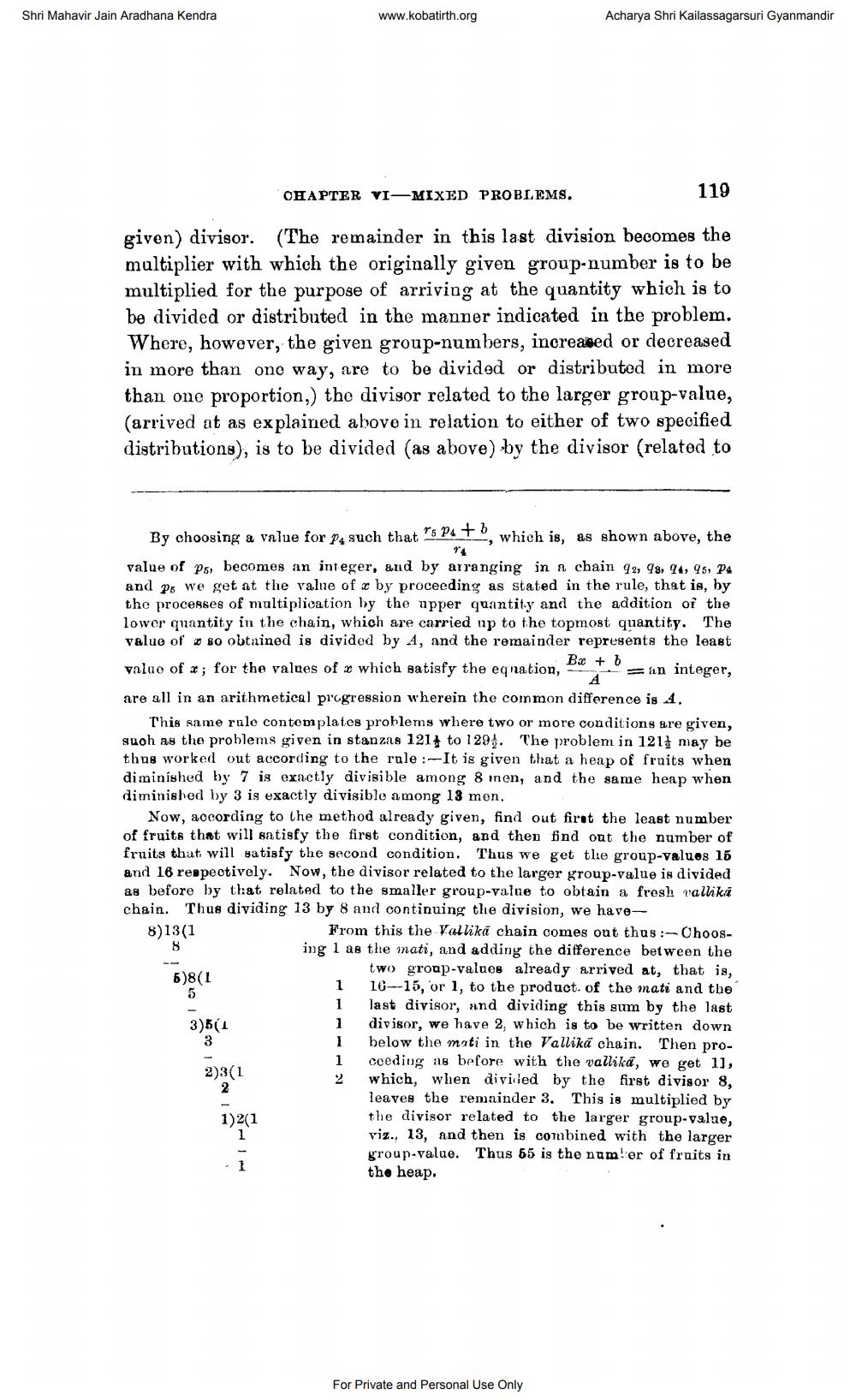________________
Shri Mahavir Jain Aradhana Kendra
www.kobatirth.org
Acharya Shri Kailassagarsuri Gyanmandir
CHAPTER VI—MIXED PROBLEMS.
119
given) divisor. (The remainder in this last division becomes the multiplier with which the originally given group-number is to be multiplied for the purpose of arriving at the quantity which is to be divided or distributed in the manner indicated in the problem. Where, however, the given group-numbers, increased or decreased in more than one way, are to be divided or distributed in more than one proportion,) the divisor related to the larger group-value, (arrived at as explained abovo in relation to either of two specified distributions), is to be divided (as above) by the divisor (related to
---
-
By choosing a value for P, such that 5 P4 T
-, which is, as shown above, the
res which is, as she
value of ps becomes an integer, and by arranging in a chain 92, 93, 94, 95, P4 and po we get at the value of x by proceeding as stated in the rule, that is, by the processes of multiplication by the upper quantity and the addition of the lower quantity in the chain, which are carried up to the topmost quantity. The value of so obtained is divided by A, and the remainder represents the least value of x; for the values of x which satisfy the equation, bu
Bx + b
=an integer, are all in an arithmetical progression wherein the common difference is 4.
This same rule contemplates problems where two or more conditions are given, suoh as the problems given in stanzas 1214 to 129. The problem in 1213 may be thas worked out according to the rule :-It is given that a heap of fruits when diminished by 7 is exactly divisible among 8 men, and the same heap when diminished by 3 is exactly divisible among 18 mon.
Now, according to the method already given, find out first the least number of fruits that will satisfy the first condition, and then find out the number of fruits that will satisfy the second condition. Thus we get tlie group-valuos 15 and 16 reppe otively. Now, the divisor related to the larger group-value is divided as before by that related to the smaller group-value to obtain a fresh walliki chain. Thus dividing 13 by 8 and continuing the division, we have 8)13(1
From this the Valliká chain comes out thus:-Ohoosing 1 as the inati, and adding the ditference between the
two groap-values already arrived at, that is, 5)8(1
1 10--15, or 1, to the product. of the mati and the
last divisor, and dividing this sum by the last 3)5(1
divisor, we have 2, which is to be written down below the mati in the Vallikä сhain. Then pro
ceeding as before with the vallikä, we get 11, 2)3(1
which, when divided by the first divisor 8,
leaves the remainder 3. This is multiplied by 1)2(1
the divisor related to the larger group-value, viz., 13, and then is combined with the larger group-value. Thus 55 is the number of fruits in the heap.
For Private and Personal Use Only




